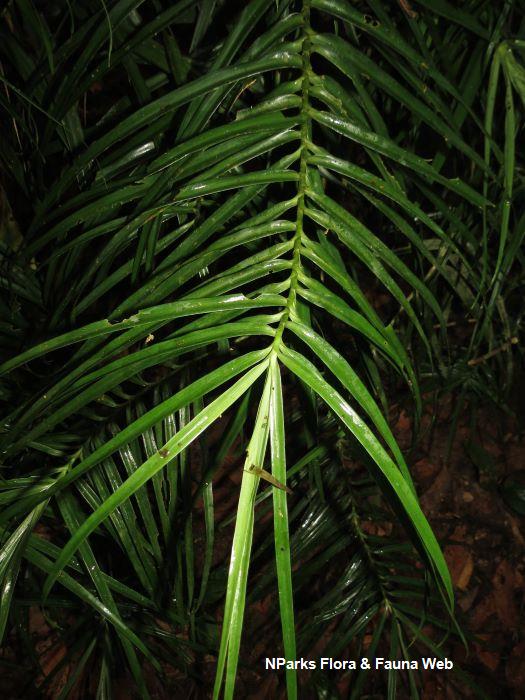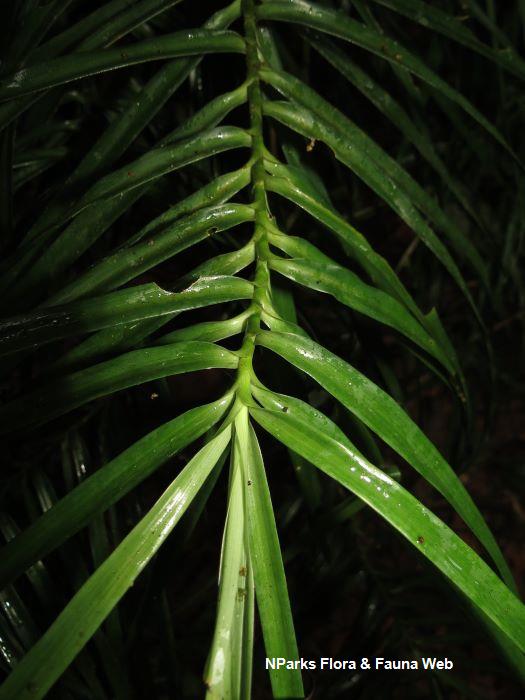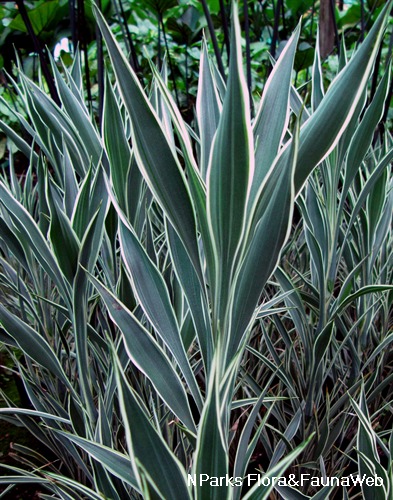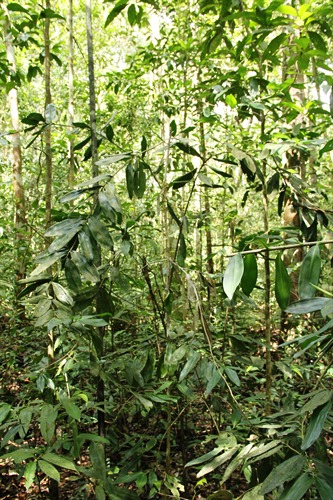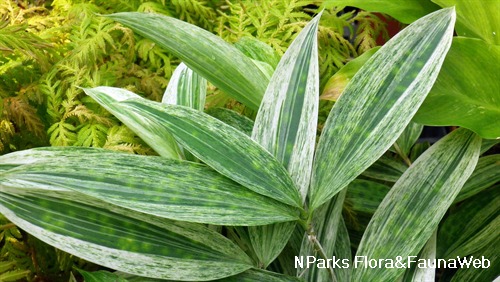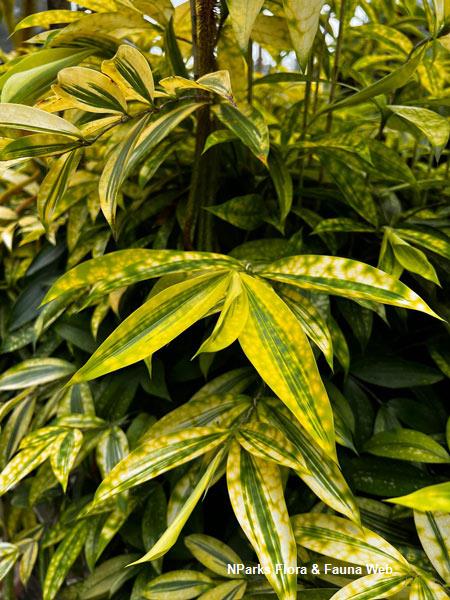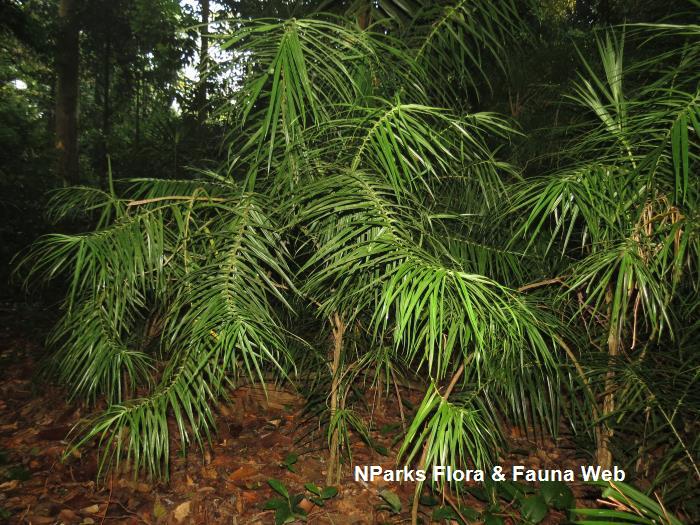
Back
Dracaena granulata Hook.f.
| Family Name: | Asparagaceae |
| Synonyms: | Pleomele granulata (Hook.f.) N.E.Br. |
Name
Classifications and Characteristics
| Plant Division | Angiosperms (Flowering Seed Plants) (Monocotyledon) |
|---|---|
| Plant Growth Form | Tree (Medium (16m-30m)) |
| Lifespan (in Singapore) | Perennial |
| Mode of Nutrition | Autotrophic |
| Plant Shape | Irregular |
| Maximum Height | 18 m |
Biogeography
| Native Distribution | Peninsular Malaysia and Singapore |
|---|---|
| Native Habitat | Terrestrial (Primary Rainforest) |
| Preferred Climate Zone | Tropical |
| Local Conservation Status | Native to Singapore (Endangered (EN)) |
Description and Ethnobotany
| Growth Form | It is a tall monocotyledon tree that grows up to 18 m tall, with multiple branching. |
|---|---|
| Foliage | The leaves are green, leathery, linear with pointed tips, growing up to 25 cm long and 1.3 cm wide. The leaves are spirally arranged. |
| Stems | The stems are cylindrical and covered in prominent leaf scars. In older stems, the bark is greyish-white and covered in grain-like tubercles or knobs. |
| Flowers | Its inflorescence is 30 cm long by 15 cm wide, with small whitish green flowers, each 0.6 cm across. |
| Fruit | Its fruits are round, orange, and about 2 cm in diameter. |
| Habitat | It can be found in swampy or wet areas of forests. It occurs locally in Bukit Timah Nature Reserve. |
| Associated Fauna | Its flowers are insect-pollinated while its fruits and seeds are probably eaten and dispersed by birds or mammals. |
| Cultivation | It may be suitable for parks. It can be propagated by seed and stem cuttings. |
| Etymology | The generic epithet Dracaena is derived from Ancient Greek drakaina for 'dragon (feminine)'. This name likely refers to the scarlet dried resin, known as 'dragon's blood', obtained from various species, including those of Dracaena. The specific epithet granulata is Latin for granulate, referring to grain-like tubercles or knobs, probably referring to the bark of this species. |
Landscaping Features
| Desirable Plant Features | Ornamental Foliage, Ornamental Form |
|---|---|
| Landscape Uses | General, Parks & Gardens |
| Thematic Landscaping | Naturalistic Garden |
Plant Care and Propagation
| Light Preference | Full Sun, Semi-Shade |
|---|---|
| Water Preference | Lots of Water, Moderate Water |
| Plant Growth Rate | Moderate |
| Propagation Method | Seed, Stem Cutting |
Foliar
| Foliage Retention | Evergreen |
|---|---|
| Mature Foliage Colour(s) | Green |
| Mature Foliage Texture(s) | Leathery |
| Foliar Type | Simple / Unifoliate |
| Foliar Arrangement Along Stem | Spiral |
| Foliar Attachment to Stem | Sessile |
| Foliar Shape(s) | Non-Palm Foliage (Linear) |
| Foliar Venation | Parallel |
| Foliar Margin | Entire |
| Foliar Apex - Tip | Acute |
| Foliar Base | Clasping |
| Typical Foliar Area | Mesophyll ( 45cm2 - 182.25 cm2 ) |
| Leaf Area Index (LAI) for Green Plot Ratio | 3.5 (Shrub & Groundcover - Monocot) |
Floral (Angiosperm)
| Flower & Plant Sexuality | Bisexual Flowers , Bisexual Flowers |
| Flower Colour(s) | Green, White |
|---|
| Flower Grouping | Cluster / Inflorescence |
| Flower Colour(s) Remarks | Whitish green |
Fruit, Seed and Spore
| Mature Fruit Colour(s) | Orange |
|---|---|
| Mature Fruit Texture(s) | Glossy / Shiny |
| Fruit Classification | Simple Fruit |
| Fruit Type | |
| Seed Quantity Per Fruit | Few (1-5) |
Image Repository
Others
| Master ID | 31037 |
|---|---|
| Species ID | 5424 |
| Flora Disclaimer | The information in this website has been compiled from reliable sources, such as reference works on medicinal plants. It is not a substitute for medical advice or treatment and NParks does not purport to provide any medical advice. Readers should always consult his/her physician before using or consuming a plant for medicinal purposes. |

